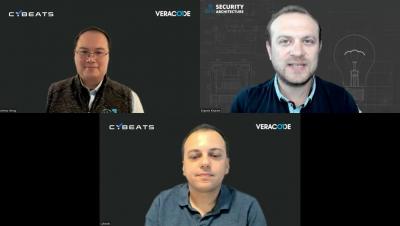Security | Threat Detection | Cyberattacks | DevSecOps | Compliance
October 2022
Why Security is Central to Citizen Experience Part 3: A Helping Hand from the Private Sector
Building trust in government is both my passion and part of my character. Last year, when I found myself contemplating my next career move, I knew that I wanted to be at an innovative company devoted to rebuilding trust in federal agencies. It didn’t take long for me to realize that Veracode and I were a perfect fit. Immediately I saw how the company’s mission and innovative application-security technology aligned with my values.
Why Security is Central to Citizen Experience Part 2: The Changing Cyber Landscape of Government
Throughout my career, I’ve seen a lot of change in the realm of cybersecurity. Whether in private- or public-sectors, from pre- to post-pandemic, I’ve witnessed the struggles of agencies coming to terms with digital transformation and cybersecurity. What I’ve found is that federal agencies are expected to keep pace with their civilian counterparts while abiding by mandates to add an extra layer of security to digital operations.
Why Mitigate Flaws to Manage Risk: Advice from an Application Security Consultant
Documenting flaws that you don't prioritize today will save you time should they become high-severity flaws in the future. Here's the best way to approach them. The topic of mitigations is a commonplace source of questions and discussion for our Application Security Consulting group.
Manufacturing Overtakes Financial Services As The Sector With Fewest Software Security Flaws
Despite Lowest Software Flaw Frequency, Manufacturing's Fix Times Lag and Create Ransomware Risk
In 2021, manufacturing became cybercriminals’ most targeted industry as a surge in global ransomware attacks disrupted manufacturing operations and exacerbated supply chain woes. This put even more pressure on manufacturing organizations that were already feeling the heat. Recognizing that ransomware attacks can stem back to software vulnerabilities, many manufacturers are exploring ways to strengthen their software security programs.
How Azalea Health Ensures Customer Trust with Cloud-based Software Security
As head of the product department at Azalea Health, I need to understand what our market needs. Based on the conversations that we've had with hospitals and clinics, enterprise-grade security is something they desperately need but rightfully expect their EHR system to provide. That’s why it’s important for our organization to take the responsibility of securing health data off their shoulders.
Choosing Secure Container Images: Secure Cloud-native Development Series
When it comes to building secure cloud-native applications, the baseline is choosing a secure container image. Docker defines a container as “a standard unit of software that packages up code and all its dependencies, so the application runs quickly and reliably from one computing environment to another.” The problem is, they’re often a pain point for many developers.
Veracode Launches Container Security Offering That Secures Cloud-native Application Development
How to See Yourself in Cyber: Top Tips from Industry Leaders
It’s 2022 and as we all know, the world is a very different place. However, one thing that has not changed is the importance of cybersecurity. In fact, it’s more important now than ever before, as the SolarWinds hack and Executive Order prove. That’s why for Cybersecurity Awareness Month this year, we asked cybersecurity pioneers and leaders to get their insights on staying cyber safe. Here are their thoughts on CISA’s 4 Things You Can Do to See Yourself in Cyber.
Secure Cloud-native Development: The Top Five Security Pitfalls and How to Avoid Them
The reason organizations are embracing cloud-native development is clear: AWS reports those who migrated saw an average of 20% infrastructure cost savings and 66% increase in administrator productivity. Moving your development process to the cloud offers these benefits and many others, but it also offers a whole new set of security challenges. This series is aimed at helping developers create secure infrastructure for modern, cloud-native applications.




